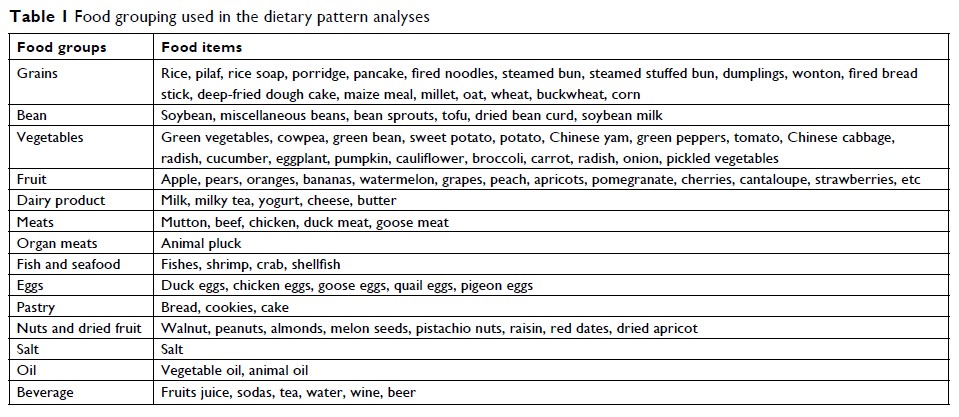108605
论文已发表
注册即可获取德孚的最新动态
IF 收录期刊
- 3.4 Breast Cancer (Dove Med Press)
- 3.2 Clin Epidemiol
- 2.6 Cancer Manag Res
- 2.9 Infect Drug Resist
- 3.7 Clin Interv Aging
- 5.1 Drug Des Dev Ther
- 3.1 Int J Chronic Obstr
- 6.6 Int J Nanomed
- 2.6 Int J Women's Health
- 2.9 Neuropsych Dis Treat
- 2.8 OncoTargets Ther
- 2.0 Patient Prefer Adher
- 2.2 Ther Clin Risk Manag
- 2.5 J Pain Res
- 3.0 Diabet Metab Synd Ob
- 3.2 Psychol Res Behav Ma
- 3.4 Nat Sci Sleep
- 1.8 Pharmgenomics Pers Med
- 2.0 Risk Manag Healthc Policy
- 4.1 J Inflamm Res
- 2.0 Int J Gen Med
- 3.4 J Hepatocell Carcinoma
- 3.0 J Asthma Allergy
- 2.2 Clin Cosmet Investig Dermatol
- 2.4 J Multidiscip Healthc

新疆维吾尔族成人 2 型糖尿病患者膳食结构与 TCF7L2 基因多态性的相互作用
Authors Cai J, Zhang Y, Nuli R, Zhang Y, Abudusemaiti M, Kadeer A, Tian X, Xiao H
Received 22 October 2018
Accepted for publication 22 December 2018
Published 14 February 2019 Volume 2019:12 Pages 239—255
DOI https://doi.org/10.2147/DMSO.S191759
Checked for plagiarism Yes
Review by Single-blind
Peer reviewers approved by Dr Colin Mak
Peer reviewer comments 3
Editor who approved publication: Dr Konstantinos Tziomalos
Purpose: This
study aimed to characterize dietary patterns in the Uyghur population and
examined the relationship between dietary pattern, TCF7L2 single-nucleotide
polymorphisms (SNPs), and the risk of type 2 diabetes mellitus (T2DM).
Patients and methods: Dietary
patterns were defined using factor analysis, and associations between dietary
patterns were evaluated using multivariate logistic regression analyses.
Genotyping of seven SNPs of TCF7L2 (rs11196205, rs12255372, rs12573128,
rs4506565, rs7895340, rs7901695, and rs7903146) was conducted, and the
association between these seven SNPs and the risk of T2DM was evaluated.
Interactions between SNPs, homeostasis model assessment-insulin resistance, and
dietary patterns were also analyzed.
Results: A total
of 828 participants were enrolled in this study, including 491 people with T2DM
and 337 healthy controls. Five dietary patterns were defined, and the results
indicated that the “fruit” and “vegetables” dietary patterns were associated
with a significant decrease in the risk of T2DM, whereas the “meats” and
“grains” dietary patterns were associated with an increased risk of T2DM.
Moreover, the “dairy product” dietary pattern showed no association with the
risk of T2DM. Furthermore, our results revealed that the TCF7L2 SNP,
rs12573128, is associated with an increased risk of T2DM. SNPs rs4506565 and
rs7903146 significantly interacted with dietary pattern.
Conclusion: Our
studies suggest that dietary pattern and genetic polymorphisms of TCF7L2 are
associated with the development of T2DM in the Uyghur population of China.
Keywords: type 2
diabetes mellitus, dietary patterns, TCF7L2 , polymorphism, Uyghur
